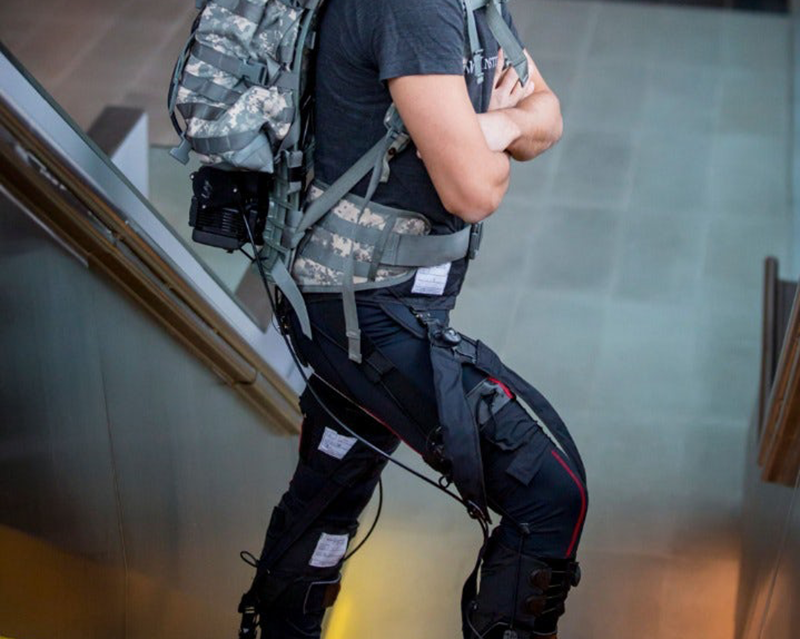Engineers at the Wyss Institute for Biologically Inspired Engineering at Harvard University and Harvard SEAS have developed smart textile-based soft robotic exosuits that could be worn by soldiers, rescue workers and fire fighters to help them cross difficult terrain and arrive fresh at their destinations so that they can perform their respective tasks more effectively. These exosuits could also help the elderly and people suffering from neurodegenerative disorders to enhance their mobility and improve quality of living.
Related These Amazing Exoskeletons Are Changing the Lives of Many
The research team is led by Conor Walsh, Ph.D., Core Faculty member of the Wyss Institute, the John L. Loeb Associate Professor of Engineering and Applied Sciences at SEAS, and Founder of the Harvard Biodesign Lab. The team been at the vanguard of developing various smart functional apparel based on soft wearable robotic devices that aid mobility by applying mechanical forces to critical joints of the body, reports Wyss Institute.
Because of its potential use in the battlefield, the Defense Advanced Research Projects Agency (DARPA) funded the team’s efforts as part of its former Warrior Web program. In two different studies, the exosuit was found to be effective. As part of the DARPA program, the researchers field-tested the exosuit in Aberdeen, MD, in collaboration with the Army Research Labs, where soldiers walked through a 12-mile cross-country course.
The exosuit with multiple joints, consists of textile apparel components worn at the waist, thighs, and calves. A mobile actuation system worn close to the waist is integrated into a military rucksack, which helps transmit mechanical forces that are transmitted via cables running across the exosuit’s soft components to ankle and hip joints. This mechanism enables the exosuit to augment power to the ankles and hips to aid with leg movements during walking.
“We have updated all components in this new version of the multi-joint soft exosuit: the apparel is more user-friendly, easy to put on and accommodating to different body shapes; the actuation is more robust, lighter, quieter and smaller; and the control system allows us to apply forces to hips and ankles more robustly and consistently,” said David Perry, a co-author of the ICRA study and a Staff Engineer on Walsh’s team.
Related Designing Exoskeletons to Interact with Humans
Walsh said that in the past they demonstrated that by using optimization methods and evaluating energy savings in the lab automatically individualized control parameters in different wearers. But, they “needed a means to tune control parameters quickly and efficiently to the different gaits of soldiers at the Army outside a laboratory,” he said.
In a study published in the Journal of NeuroEngineering and Rehabilitation (JNER), the team used a tuning method that utilizes the sensors in the exosuit to optimize power delivered at the ankle joints.













